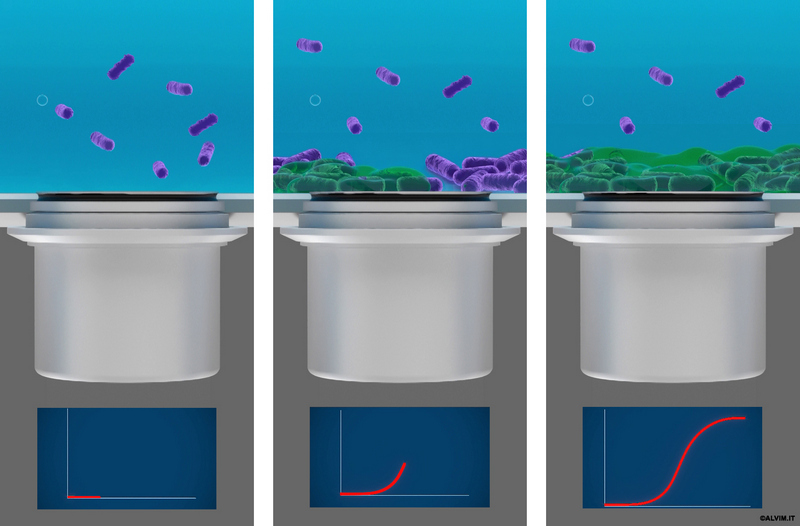The term fouling indicates any kind of deposit accumulating on a surface, including minerals, proteins, fats, microorganisms, etc. Therefore, a fouling sensor or fouling probe detects generic deposit, with no specificity.
On the contrary, the term biofilm refers only to the layer formed by microorganisms, in particular bacteria. So a biofilm sensor or biofilm probe detects only microbioogical growth.
For such reason, the information provided by a biofilm sensor is more specific than that given by a fouling sensor.

For example, if you want to trigger a sanitation or biocide treatment, or to check its effectiveness, you shall use a biofilm sensor, not a fouling sensor. Indeed, the biofilm sensor can tell you if microorganisms are growing or not, and if a sanitation treatment is really effective.
Suggested readings:
Donlan, R. M. (2002). Biofilms: microbial life on surfaces. Emerging infectious diseases, 8(9), 881.
Nikolaev, Y. A., & Plakunov, V. K. (2007). Biofilm—“City of microbes” or an analogue of multicellular organisms?. Microbiology, 76(2), 125-138.
Flemming, H. C., Neu, T. R., & Wozniak, D. J. (2007). The EPS matrix: the “house of biofilm cells”. Journal of bacteriology, 189(22), 7945-7947.





